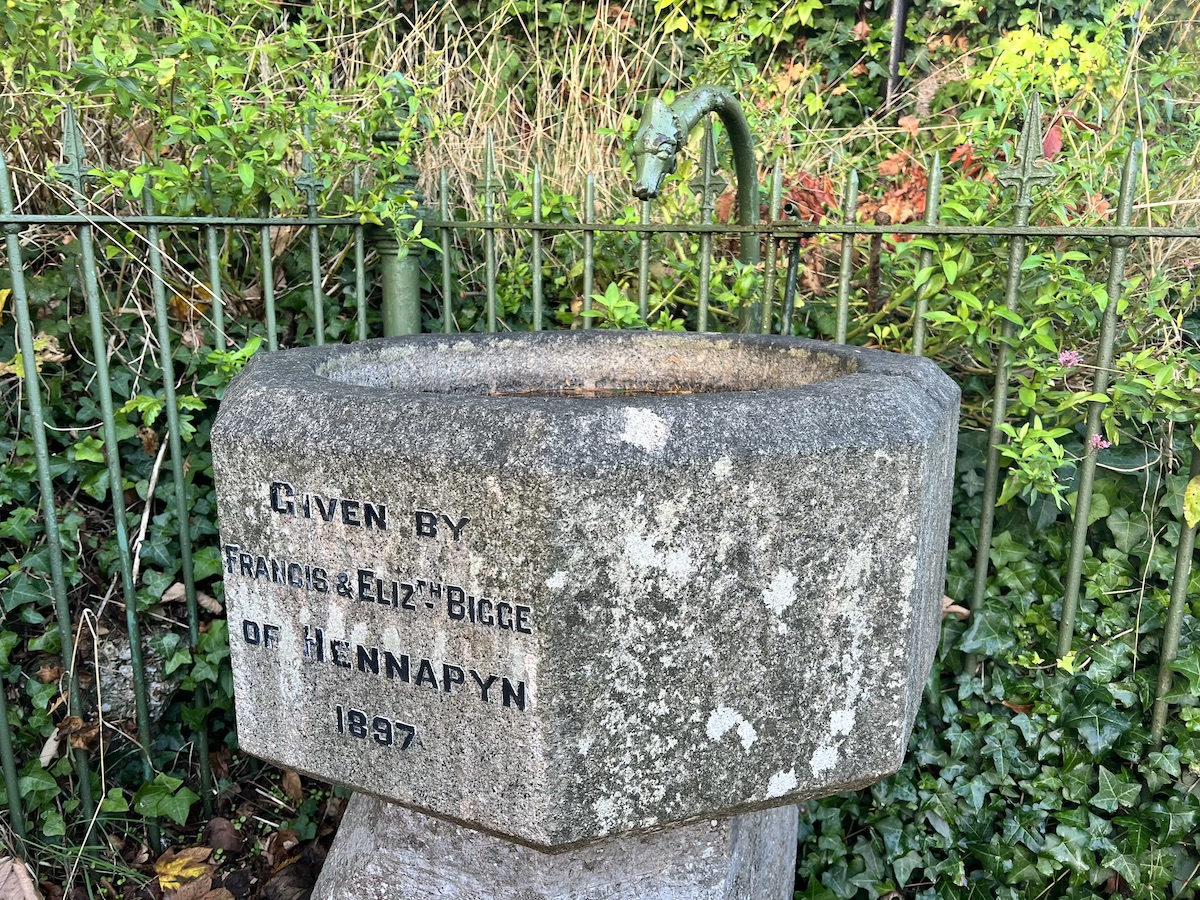Taleblazers was an idea that Kev and I had been discussing vaguely for several years, but it was only in lockdown that we started to take it more seriously. The Bigge Fountain, officially called simply Chelston Drinking Fountain, played a big part in getting our social enterprise off the ground.
Victoria and I live very close to one another, so when we were allowed to meet in twos to go for no more than an hour’s walk we would regularly set off together to stretch our legs. Our little rambles took us all around Chelston, through the arterial streets connecting up its green parks, never quite as far as the sea front for fear of being asked our business by the police. As we walked things would catch our eye and we would wonder what they were. What was the little marker stone outside the school? How old is the Chelston Manor? Was the first occupant of Sharon House really called Sharon? And as we started to answer these questions with the power of Google, we shared our snippets of information with one another, and the idea of the Chelston Heritage Trail started to form in our minds.
We always felt a bit sad walking past the Bigge Fountain, next to the little green where Walnut Road meets Old Mill Road. It has been there since 1897, when Chelston was going through a rush of development and, presumably, a burst of civic pride. A hundred metres to the north the new church of St Matthews was nearing completion, and the fountain is sited at the bottom of a little avenue of lime trees that leads up to its door. It’s a nice spot to have a quiet moment to imagine upper Chelston as it would have been back then: the age of the automobile has left the area looking a little less grand than it would have been in Victorian times.

The fountain was installed by the remarkable Elizabeth and Francis Bigge of Hennapyn (the largest villa in Chelston until its demolition). Francis Bigge was born in Northumberland in 1820, joined the Navy at 15 and before he turned 20 years old, doubtless helped on his way by good family connections, was living as a pioneer in Australia. He ‘squatted’ on Crown Land with his brother, survived encounters with escaped convicts and eventually became a politician (the camp he originally founded grew and is now the city of Grantchester). He returned to England briefly in 1853 and married Elizabeth before returning to Australia where he enjoyed a long political career before returning to England in 1873. They retired to Cockington where Elizabeth was one of the leading lights of the local anti-vivisection movement. Their love of animals is well represented on the fountain: the water spout is a great swan-neck curve of metal which ends in the head of some fantastical Celtic beast, while below there are water bowls for dogs to drink from. The fountain is grade II listed, and the designation includes the railings and green behind – now mostly occupied by an electricity substation. I always feel a little sad when I visit, this formerly grand little meeting spot now utterly transformed by the arrival of the automobile, flooded by rivers of tarmac, even the fountain itself now normally hidden behind a parked car.
These places however are fundamental to our understanding of our ‘home patch’. They remind us of the rich lives of people that once lived in our part of town, the people who developed it and shaped it, even as their life stories fade from living memory. It’s natural to aspire to leave some kind of legacy, a tangible impact on your community, something that people will look at and remember you. The Bigge Fountain is more than just a fountain. It’s a fragment of the Victorian era looking back at us, a reminder of the days when these streets belonged to horses and dogs and people, who would have all stopped for a refreshing drink as they passed by.
